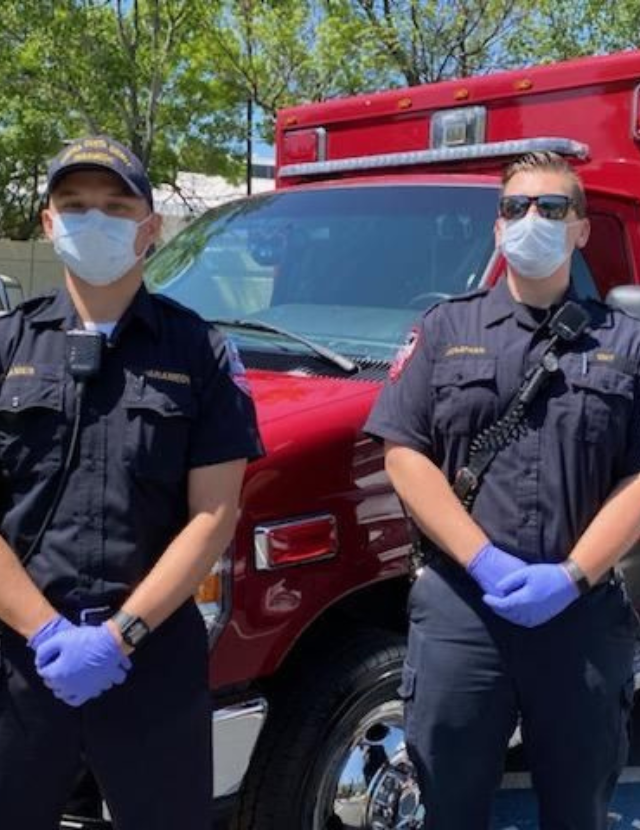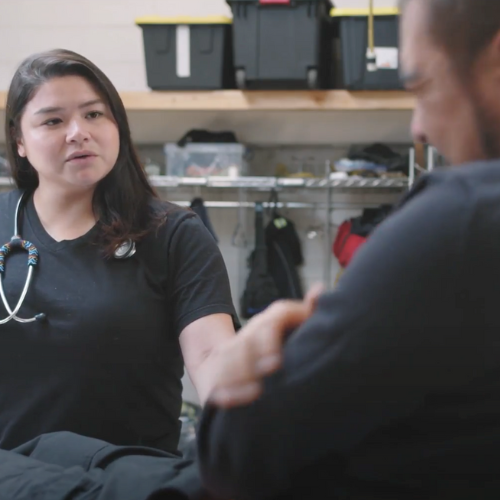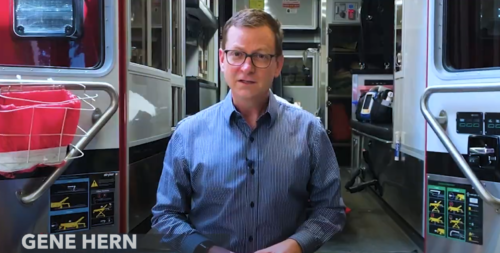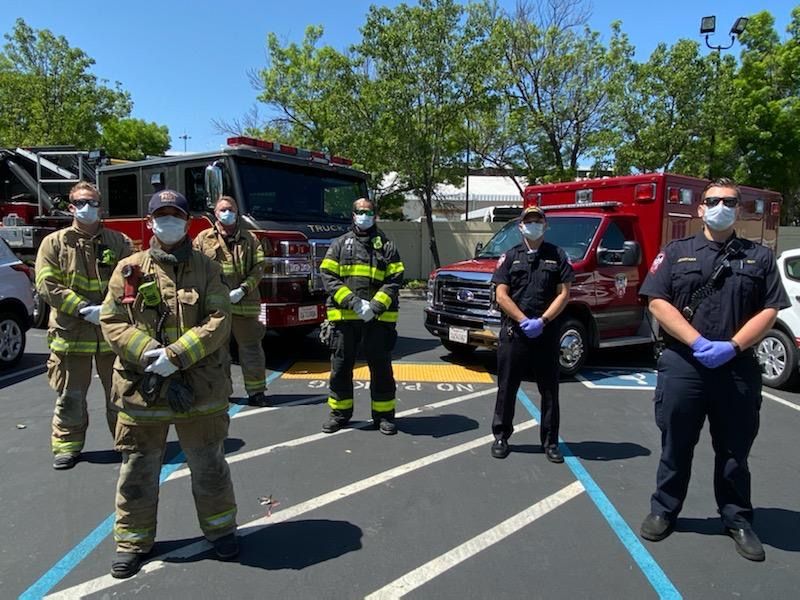Highlights

Contra Costa County is one of a few places in the country to implement a first-responder Emergency Medical Services model for treating patients with opioid use disorder and to help save lives. This innovative model is led by PHI's CA Bridge program and helps to bridge the gaps in effectively treating opioid patients in California communities.
160 paramedics in Contra Costa trained in treating opioid use disorder (OUD) with buprenorphine and distributing naloxone
1.2K patients screened by Emergency Medical Services for opioid use disorder
74 patients were administered buprenorphine to treat opioid use disorder with 35% in care at 30 days after an overdose
135 patients contacted by a navigator for follow-up
53 patients who received buprenorphine and then transported to an Overdose Receiving Center
400+ naloxone kits distributed by Emergency Medical Services
-
Strategic Initiatives
Opioids
Opioid use is on the rise in California and is responsible for the majority of drug deaths. In San Francisco alone, opioid overdoses killed more than three times as many people than COVID-19 during 2020. Fentanyl, a commonly known opioid, has been the major driver of these overdose deaths, contributing to a death rate in California that increased 10-fold from 2015-2019. In 2021, over 6,700 people in California died from an overdose.
Patients who come into the hospital emergency departments for an opioid overdose are at high risk because they’re already overdosing. If a patient survives an overdose, they have a 20% chance of dying within the next year from another overdose. Emergency Medical Services (EMS) staff, or paramedics, are frontline responders in communities even before a patient reaches a hospital—so the Public Health Institute’s Bridge program understood that EMS staff were key in helping to save lives.
Substance use experts with the Bridge program see the harmful impacts of opioid use on individuals and communities every day and understand the urgency and importance of finding immediate and effective treatment that can save more lives. Substance use experts are working with EMS to help bring state of the art treatment to patients who need it the most.
The Bridge program is helping to meet this need by promoting a successful Emergency Medical Services Buprenorphine Use Pilot (EMSBUP) project in Contra Costa County and looking to expand it throughout the state. Contra Costa County is one of a few places in the country to implement a first-responder Emergency Medical Services model for treating patients with opioid use disorder and saving lives. Due to the success of the pilot project, the State Emergency Medical Services Commission adopted a regulation that changed paramedics’ scope of practice to allow them to assess and administer buprenorphine as first responders in treating patients with opioid use disorder.

A Closer Look at Communities
Some patients who come through Emergency Medical Services may not have access to health clinics in their community, they fear treatment due to stigma related to opioid use or may not have health insurance. Language and cultural barriers can create an even greater risk or challenge to receiving substance use treatment and impact the quality of healthcare that a patient receives. Some cultures may also not engage in medical care to begin with—they may have been disenfranchised, or may not trust medical care providers. This is why implementing a non-traditional model is so important. Bridge staff recognized and were able to pinpoint Emergency Medical Services as an opportunity to reach patients who are falling through the cracks and get them the treatment they need.
How the Pilot Program Works
When a patient is at risk of overdosing or has overdosed on opioids, many times their first point of contact is with EMS or 9-1-1 responding paramedics. Traditionally, patients who overdose would receive Narcan from the paramedics but often refuse transport to an emergency room and receive no further follow-up to address their underlying addiction.

When someone overdoses, they’re at very high risk, so getting that person into treatment is key. Some might not make it to the ER.Dr. Gene Hern
Emergency Medical Services Director for the Bridge Program at PHI and Emergency Physician at Highland Hospital
EMSBUP expedites the process of getting patients addiction treatment by training street-level paramedics to assess and treat patients from an ambulance with buprenorphine, a medication that reduces cravings for opioids and protects against overdose. Historically, paramedics haven’t been allowed to administer buprenorphine because it was not in their scope of practice.
After overdose patients are assessed by the paramedics, they are then transported to an Overdose Receiving Hospital, similar to a Trauma Center. From there, they receive care immediately, they’re given a prescription for buprenorphine and are connected to a navigator who specializes in substance use who can refer the patient to substance use treatment. Even patients who do not accept transport to the hospital receive a follow-up call from a navigator and are offered help in finding substance use treatment.
The Outcome
Contra Costa County is one of the first places in the country to engage EMS (paramedics) in starting treatment for opioid use disorder. Of all the patients who were administered buprenorphine, more than a third (35%) were in substance use treatment at the 30-day mark. The pilot project indicates promising results for connecting patients to buprenorphine, patient navigators and the clinic setting.
In Contra Costa County, the African American population makes up 8-9% of the overall population, yet they represent 17% of overdose deaths, indicating that the opioid crisis has affected African Americans more profoundly than other populations. However, 20% of the pilot program patients receiving buprenorphine were African American, a higher rate than those who were dying from opioid overdose. This finding suggests that the pilot project could be a useful tool to successfully reach and treat African Americans for opioid use disorder. After launching the pilot project in Contra Costa County, Bridge helped provide training for paramedics in additional locations (Alameda and San Francisco counties).

Scaling Up
After successfully demonstrating that paramedics could safely administer buprenorphine from an ambulance and that many patients were engaged in follow up treatment, Bridge advocated for the State Emergency Medical Services Commission to change paramedics’ scope of practice to allow them to administer buprenorphine.
In September 2022, the EMS Commission voted unanimously to allow local EMS agencies the option of adding buprenorphine to their scope of practice. This policy change opens the door for more counties to begin training medics to initiate life-saving treatment for opioid use disorder, rather than simply waiting for another overdose.
The California Department of Public Health recently launched an initiative to further support expansion of EMSBUP through additional funding for counties to train medics. Already over half a dozen counties have expressed interest. PHI’s Bridge program will be working closely with them to offer training and to build on the lessons learned from the pilot in Contra Costa County.
Ultimately, the Buprenorphine Use pilot project has the potential not only to save lives in the community of Contra Costa County but to serve as a model for similar interventions across the state and nation.Dr. Gene Hern
Emergency Medical Services Director for the Bridge Program at PHI and Emergency Physician at Highland Hospital
Learn more about the EMS pilot project on the Bridge website.
Work With Us
You change the world. We do the rest. Explore fiscal sponsorship at PHI.
Support Us
Together, we can accelerate our response to public health’s most critical issues.
Find Employment
Begin your career at the Public Health Institute.
